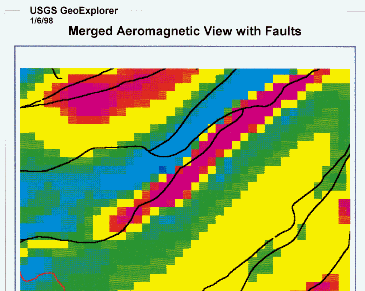
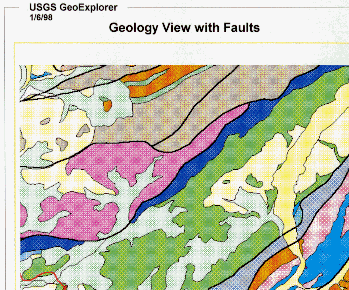
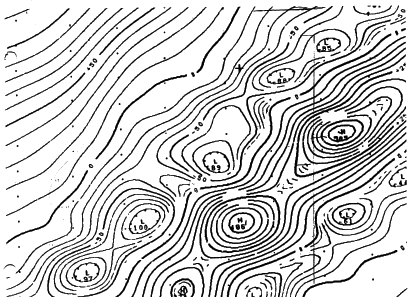
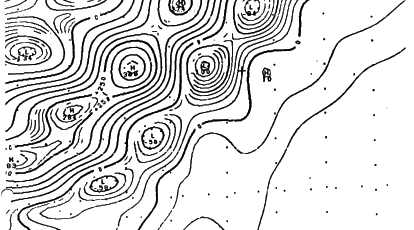
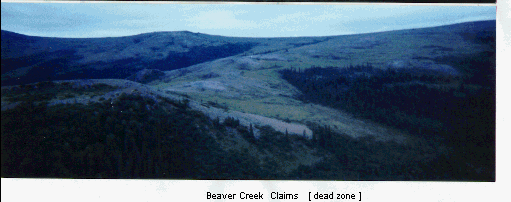
ABSTRACT
The Beaver Creek alpine-type serpentinite body is in the northeastern part of the Livengood ultramafic trend, east-central Alaska, contains nickel concentrations of as much as 0.51 percent and, locally, detectable amounts of platinum and palladium.
INTRODUCTION
An irregular mass of nickeliferous serpentinite approximately 20 miles long, with maximum width of over 1 mile, crops out in the Livengood C2 and C3 quadrangles, east-central Alaska.This northeasterly trending alpine-type serpentinite conforms generally to the regional structural grain and is flanked on the southeast by metamorphosed siliceous graywacke clastic rocks and on the northwest mainly by fractured and reheated chert strata.The analytical results from samples of the ultramafic material collected during reconnaissance geologic examinations along this north easternmost segment of the Livengood ultramafic trend [ foster, 1967] indicated that these rocks are abnormally nickeliferous as compared to some serpentinites from other parts of the world [table 1].
GEOLOGGIC SETTINGS
The Serpentinite mass forms a conspicuous light-green to brown band which consists of outcrop and ruble and is characterized by sparce vegetation and low rolling hills with isolated pinnacles of more resistant rock. These pinnacles are tectonic inclusions or mafic igeous intrusives within the serpentinite teffane. Southeast of the serpentinite body are controlled Devonian [?] metagraywackes that contain abundant clasts of chert and igneous rock fragments. To the northwest are shattered massive and banded cherts. The juxtaposition of these divergent metamorphic rock types and the nature and geometry of the serpentinite mass suggest tectonic emplacement of the ultrmafic material along a major reverse or strike-slip fault.
SERPENTINITE
The ultamafic rock is completely serpentinized, has no consistent internal fabric, and varies from a massive blocky variety to highly sheared slickenite. In the massive rocks, serpentine-group minerals occur as fine scaly aggregates in a semiradial distribution as lamellar fibrous scales normal to serpophite "eyes" oropaque veinlets, and as a semidecussate meshwork. The slickentite rocks have these same textures partially or totally modified by shear. Bastite, minor asbestos-fiber veinlets, and primary and secoundary spinel group minerals are ubiquitous, whereas only traces of sulfides were recognized.
CONCLUSION
These ultramafic rocks contain concentations of nickel which justify detailed investigation. Although the detected amounts of platinum, palladium, and rhodium are low, their presence is noteworthy. The possible existence of covered bodies on strike with or parallel to the major ultramafic trend could be tested by magetometer surveys; coincident anomalies derived from electromagnetic and magnetic surveys could outline additional targets for physical exploration.
LOCATION
Beaver Creek Property is located 70 miles north of Fairbanks Alaska, 10 miles off of the highway. The property is accesible by 4 wheeler along a trail that goes by the property.
SIZE
The Beaver Creek property is made up of 68 prospecting sites for a total of ten thousand,eight hundred and eighty [10,880] acres on State Patented Land, attentively approved for mining.
FIELD PROGRAM OBJECTIVES
Planned exploration work will include, drilling shallow holes [50-100 feet] in the "Kill Zone" which is a area where the leaching of minerals out of the rocks has created an area where no vegetation will grow. This area also has a very high aeromagnetic high.
The objective of the exploration program is to develope the property only to the point where a Major Mining Company will want to joint venture the property.




Aeromagnetic High on Beaver Creek Property
© 1997 bmurray@sunwave.net